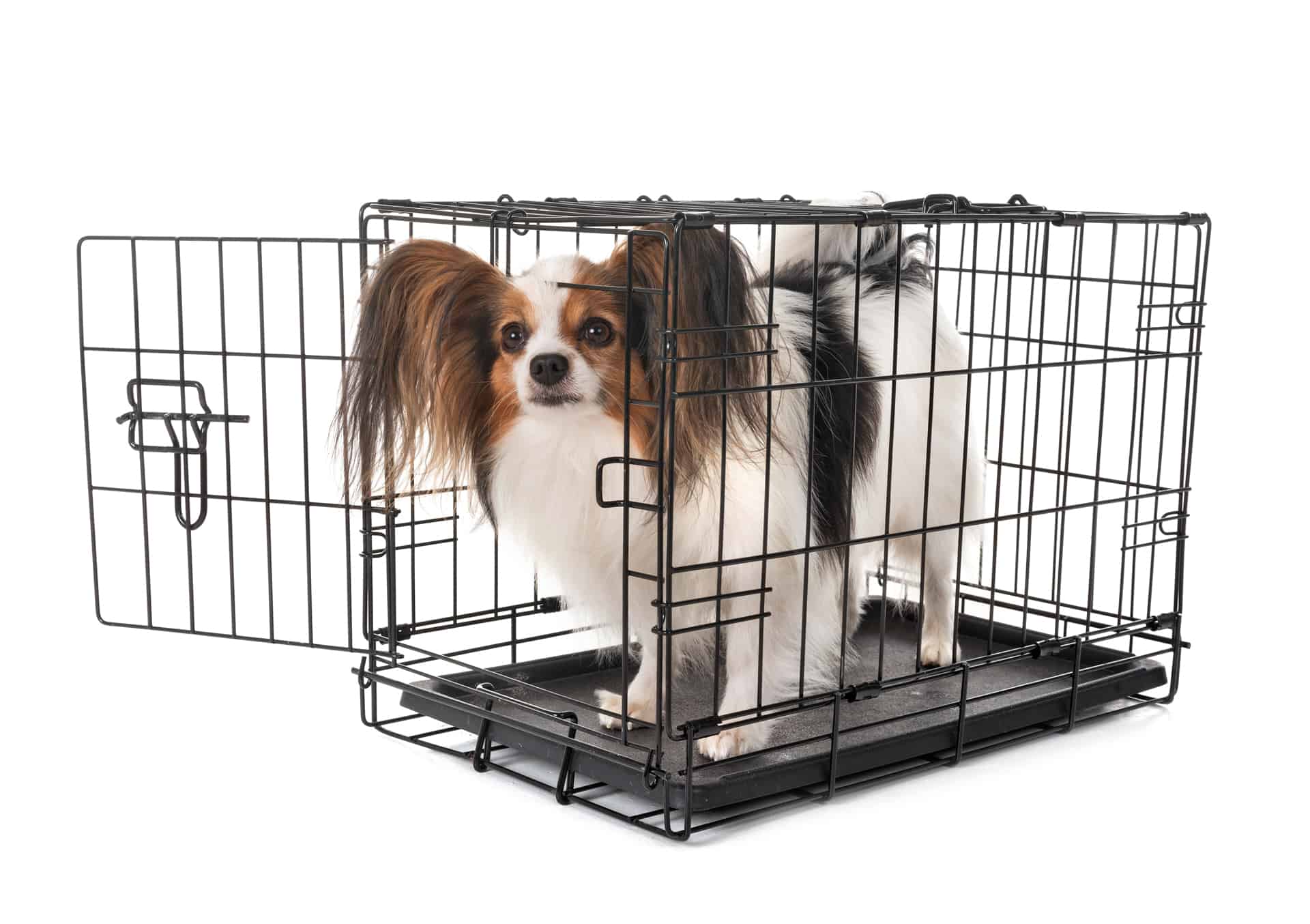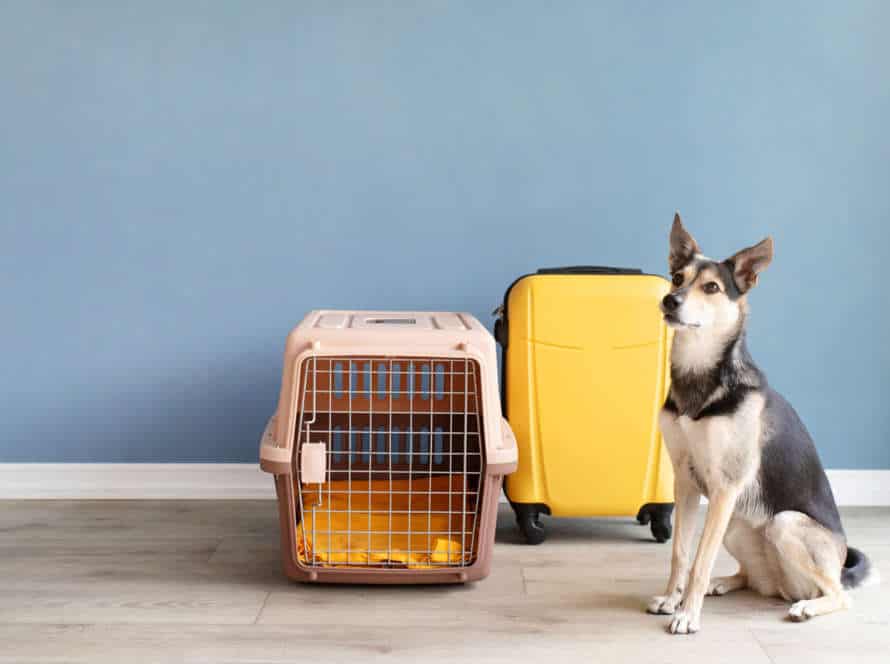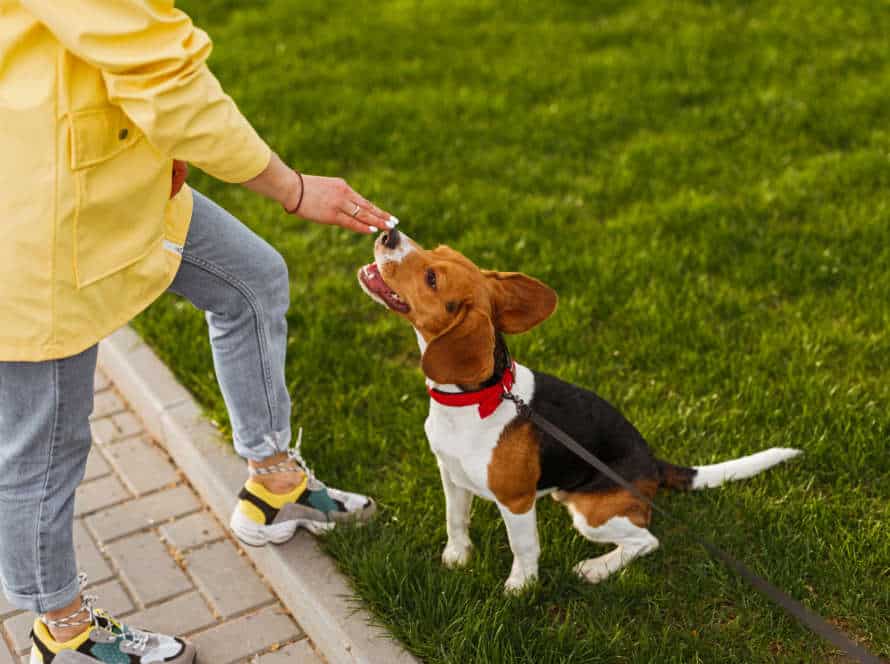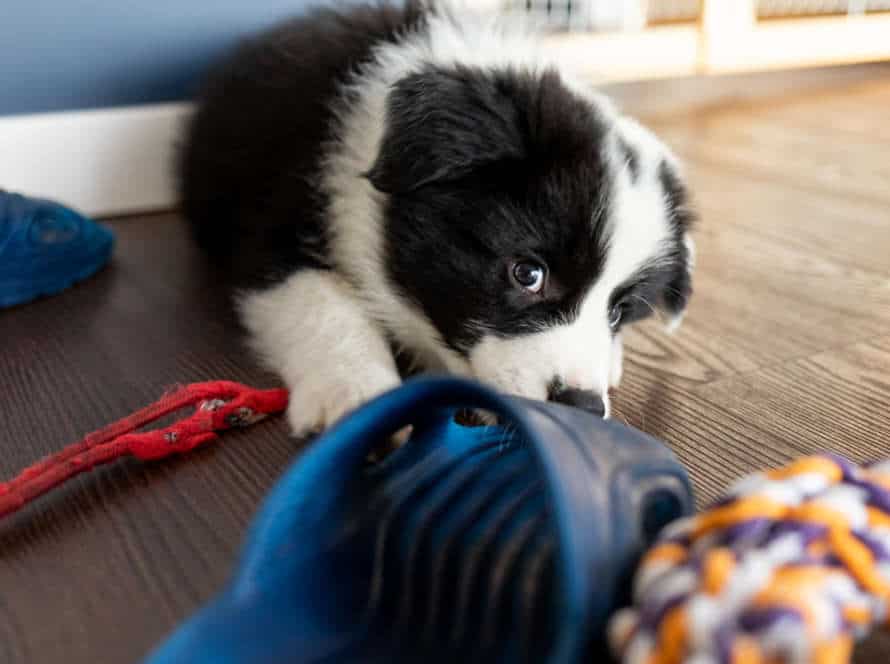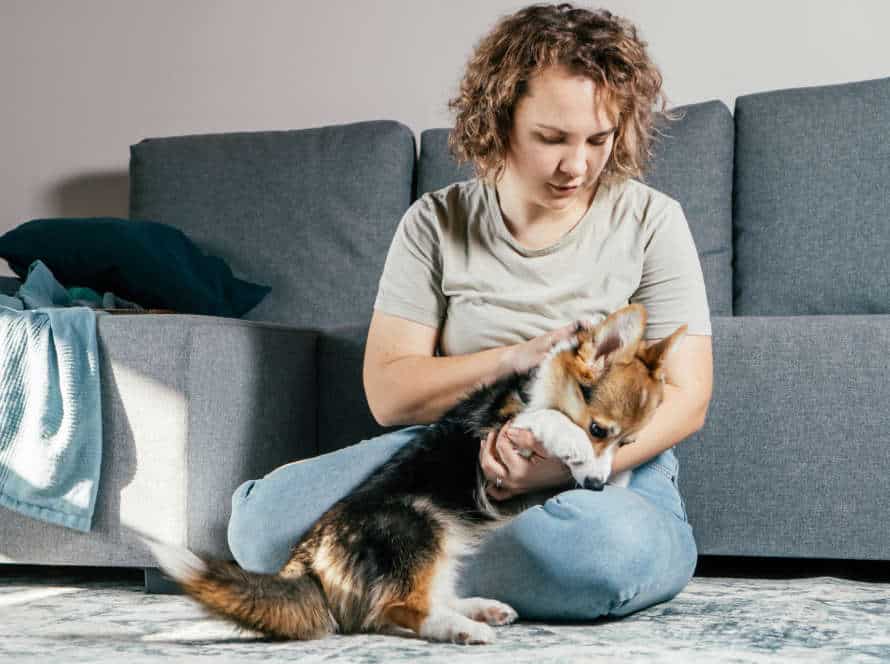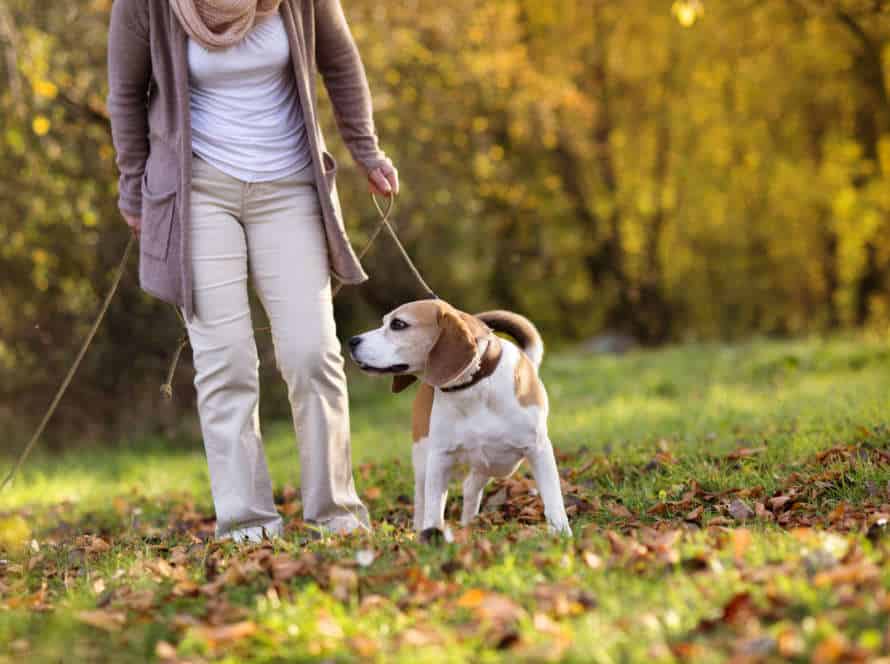Pros and Cons of Crate Alternatives for Your Canine Companion
Crate training is important, but not all pooches like it. There are alternatives. Here’s a look at their pros and cons:
Pros:
- More room and freedom for your pup. Stretch and play!
- Easier to clean than a crate. Wash and dry in no time.
- Stylish designs available.
Cons:
- Not as secure as a crate. May not be escape-proof.
- Not ideal for training. Crates are best for housebreaking and teaching.
- Could be more pricey than a crate. Playpens and kennels may be costly.
Pro Tip: Ask your vet before picking an alternative. Make sure it’s safe and good for your pup.
Section One: Crate Alternatives
Thinking of using an alternative to the traditional crate for your pup? Here are some points to consider. This article will discuss the pros and cons of different crate alternatives.
Let’s look at the advantages of the various options out there.
Baby Gates
Are you in search of an alternative to crating your canine? Baby gates might be the solution you need! Here’s a look at the pros and cons:
Pros:
- More room for your pup to move around than a crate.
- Good air circulation.
- Your pup can still see and socialize with family while being safely contained.
Cons:
- Some dogs may be able to jump or push through the gates.
- Not ideal for small spaces or homes with stairs.
- Baby gates are permanent fixtures – unlike crates, which can be moved and transported.
Benefits of using baby gates
Baby gates provide lots of advantages for pup owners who want to keep their dogs safe and in check. Here are some of these perks:
- Easy to put up & use: Baby gates come in different sizes & designs and don’t need any special tools or skills to install or use them.
- Not too pricey: Baby gates are more affordable than crates, enclosures, or fences. They’re a great budget-friendly choice for dog owners who want to keep their pets confined.
- Flexible: Baby gates can close off rooms, hallways, or staircases. So, they’re a useful way to keep dogs in various places around the house.
- Safe & humane: Baby gates are a safe & humane alternative to crates and enclosures as they let dogs have more freedom of movement and socializing while keeping them from causing any harm or accidents.
Although baby gates are great for dog owners, they may not be suitable for all dogs or scenarios. So, it’s important to consider the pros & cons of alternatives to crates, such as baby gates, before deciding which one is the best for your pup.
Potential drawbacks of using baby gates
Using baby gates to contain your pooch may have some drawbacks.
- Firstly, they are not always secure; some determined doggos might be able to jump over or knock them down.
- Secondly, they can cause stress and anxiety in some pups, especially if used for long periods or if the pup feels trapped.
- Thirdly, baby gates may limit your pup’s movement and exercise, which could lead to health problems.
- Lastly, baby gates might hinder your pup’s socialization with other family members, including other pets.
It’s important to watch your pup’s behavior and needs, and use baby gates properly.
Playpens
Playpens are a great option if you don’t want to crate train your pup. Here’s the good and bad of using them.
Pros:
- More room than a crate, so your pup can move and play.
- Use outdoors or indoors – lots of flexibility.
- Adjustable to fit your pup as they grow.
Cons:
- Takes up more space than a crate.
- Harder to transport.
- Not as secure as a crate. Not ideal for pups that need extra supervision.
Pro tip: When selecting a playpen, make sure it’s sturdy and durable. And always supervise your pup when they’re in it. Make sure they have water and toys too.
Advantages of using playpens
Playpens are a great alternative to traditional dog crates. These have many advantages:
- More room for your furry friend to move and play. Playpens are comfier, and less restricting than crates.
- Flexibility – they can be re-sized, and adjusted to fit your indoor or outdoor space.
- Safety – an enclosed area, so your pup can play and rest, while protecting your home and belongings.
- Training aid – useful for house training, teaching your pup boundaries and limitations.
It’s important to remember that playpens should not replace proper exercise, training and supervision.
Drawbacks of using playpens
Playpens can be good for containing your pup and keeping them safe. But, they may not be the best long-term solution.
A few cons of using playpens include:
- Limited room: Playpens don’t give your dog much room to move or play.
- Lack of supervision: You’ll need to check on your pet often if they are in the playpen for a while. Otherwise, they may experience boredom or anxiety.
- Costly: Playpens can be expensive – although cheaper options are available with lower quality.
- Not good for all breeds: Larger breeds may feel cramped, while smaller breeds may be able to climb out.
Playpens can be great for short-term use. But, it’s best to talk to your vet and do your research to decide if it’s the right choice for your pup.
Pet Pens
Pet pens are an alternative to regular dog crates. They provide a safe, spacious environment for your furry companion to play and relax in. Here’s what you need to know about pet pens:
Pros:
- More room: Pet pens have more space than traditional dog crates, letting your pet move around more freely.
- Comfort: Depending on the type of pet pen, your pup may have access to comfy stuff like beds or toys.
- Mobility: Many pet pens are easily portable, great for travel or outside play.
Cons:
- Cost: Pet pens can be pricier than conventional dog crates.
- Size: If your pet is big, it may be hard to find the right pet pen size.
- Escaping: Some dogs can get out of pet pens, especially if not secured properly.
Pro tip: Think about the pros and cons before selecting a pet pen. Choose one that best fits your pet’s requirements and character. Also, always supervise your dog while they’re in the pen to keep them safe.
Benefits of using pet pens
Pet pens are a great alternative to crates! They provide a lot of advantages for your furry friend. Here’s what you need to know:
- Space – Pet pens offer more room for your pet to move around and play. Much more than a crate!
- Mobility – They can be moved around easily, both indoors and outdoors.
- Security – Pet pens have tall walls, keeping your pet safe and preventing them from causing trouble.
- Comfort – Pets have plenty of room, plus their bed, food, and water close by.
But of course, there are some cons to consider. Pet pens take up more floor space and need more monitoring for accidents or chewing.
Disadvantages of using pet pens
Pet pens have a downside: they limit your pet’s space and movement. They provide a safe area for pets to play, eat and sleep when their owners are away. But, they can be too restrictive, especially for bigger breeds. Too much confinement can lead to boredom, restlessness and destruction. This can result in bad behaviors like barking, biting and digging.
Also, pet pens may not be suitable for anxious pets or those with behavioral issues. They might feel trapped and lonely in such a small area.
To address these problems, pet owners can look for alternatives like dog houses, gates and barriers. They should take into account the size, behavior and needs of their pet when choosing. This will make sure their pet is comfortable, safe and happy while in confinement.
Section Two: Factors to Consider
Choosing a crate for your pup? Consider these factors: size, style, material, cost, and storage. Let’s look at each one more closely so you can make the best decision for your dog.
Size and Breed of Dog
When picking a crate alternative for your dog, size and breed matter a lot. Consider the following:
Small Breeds:
- Playpens, pet gates, or puppy pads are great for small breeds.
- They give your pup space to move and play, so you don’t need a crate.
Cons for Small Breeds:
- High-energy pups need good training, which crate alternatives may not do.
- Small dogs may escape from playpens or pet gates.
Large Breeds:
- Crate alternatives with lots of space work best for big dogs.
Cons for Large Breeds:
- Alternate methods may not provide the security and training consistency of a crate.
Tip:
No matter what, ensure that your pup’s crate alternative is safe and comfy, plus plenty of training to avoid issues.
How dog breed affects the choice of crate alternative
When selecting a crate alternative for your pup, consider their breed and size. Different breeds have different requirements when it comes to sleeping and rest. Picking the correct option will make sure your pup is comfy and secure.
For example, little breeds like Chihuahuas or Yorkies may prefer a snuggly bed or crate alternative with soft walls or cushions. On the other hand, bigger breeds like Great Danes or Saint Bernards may benefit from an elevated cot-style bed to help joint health and avoid stiffness.
Dogs with anxiety could benefit from a crate alternative that offers covered, den-like space. And, dogs with a history of destructive behavior may require a more robust option like a heavy-duty steel frame bed or chew-proof mat.
It’s essential to consider your dog’s individual needs and character when picking a crate alternative to guarantee a safe and secure sleeping area.
Selecting the appropriate crate alternative size for your dog
Picking the perfect crate alternative size for your pup can have a big impact on their comfort and safety when they’re at home or travelling. Here are some points to keep in mind:
- Your pup’s size and weight: The crate should give your pup enough space to stand up and turn around easily.
- Purpose: If you’re using the crate for travel, pick something that’s easy to move. If it’s for sleeping, go for a roomy one.
- Material: Wire, plastic, and fabric are options. Each has its pros and cons.
- Where you live: Hot climates need well-ventilated crates. Cold climates need well-insulated ones.
By taking these factors into account, you’ll get the ideal crate alternative size for your furry friend. They’ll be comfy and secure, wherever they are!
Behavior and Temperament of Dog
When choosing an alternative to a crate for your pup, remember that their behavior and temperament are key factors. Options include playpens, indoor kennels, and baby gates. Each has its own benefits and drawbacks, which can affect your dog differently.
- Playpens offer space for active dogs to roam and play, while keeping them safe and secure indoors. But, some pups may feel too confined and become anxious or destructive.
- Indoor kennels provide a place for sleeping and resting and can help with house-training and destructive behavior when you’re away. But, some pooches may not want to enter and feel trapped inside, causing distress.
- Baby gates are a simple and affordable choice to keep your pet in a certain area while still allowing them to move around. This is great for small dogs that can easily escape other types of containment. However, large dogs may be able to jump over or knock down the gate.
To decide which alternative is best for your pup, consider the pros and cons and understand your dog’s behavior and temperament.
How your dog’s temperament affects your choice of crate alternative
Your pup’s mood is a big deal when it comes to picking a crate alternative. Some doggos may feel uneasy or squished in a crate, while others may feel safe and secure. Before you select a crate alternative for your pup, you must assess their character.
Here are the factors to think about when selecting a crate alternative for your pup:
Pros:
- Roomier and more comfy for large dogs or those with anxiety.
- More freedom to move around.
- Easier to clean.
Cons:
- Costlier than crates.
- Not always a good choice for travelling.
- May not give the same level of safety and security as a crate.
In the end, whether to use a crate alternative or not depends on your pup’s personality and what you need as an owner. It is important to think about all the factors before choosing the best option for your pooch.
Addressing anxiety and destructive behavior
Considering crate alternatives for your pup? It’s important to weigh the pros and cons. Alternatives can solve anxiety and destructive behavior – but may not suit every pup.
Pros:
- Playpen: More space than a crate and allows more freedom.
- Baby Gates: Great option if pup is well-behaved, but needs boundaries.
Cons:
- Risks: More freedom can mean injury or furniture destruction.
- Supervision: Without a crate, you must watch pup more closely.
When deciding, consider pup’s personality, behavior and living situation. Plus, provide toys, exercise and mental stimulation – to keep pup happy and healthy!
Living conditions
Thinking of your pup’s living conditions? Weigh the pros and cons of crate options. Crates are secure – but alternatives can be more comfortable and spacious.
Pros:
- Playpens give more space and keep them contained.
- Dog-proofed rooms have natural light and air circulation.
- Soft-sided carriers are comfy for travel and easy to transport.
Cons:
- Playpens and dog-proofed rooms need supervision.
- Soft-sided carriers may not easily contain larger dogs.
- Crate training has its benefits.
Choose based on size, behaviour and activity level. Remember to be patient when training and reward them with positive reinforcement.
Factors to consider when choosing between crate or crate alternative
Choosing between a crate or an alternative for your pup? Here is a pros and cons list to help you decide.
Pros:
- Alternatives are cheaper than crates.
- Look more stylish and aesthetically pleasing.
- More spacious and open feeling.
Cons:
- Not as secure, easier to escape.
- Require careful supervision.
- Not airline-approved.
- Can take up more space.
The choice between a crate or an alternative depends on your lifestyle, your pup’s needs and personality, and your personal preference.
Safety concerns
Selecting crate alternatives for your canine companion? Pick carefully! Safety is key. Different types of crates have safety concerns.
- Soft-sided crates: Popular, but not for heavy chewers or aggressive dogs. Mesh can be torn or chewed off, leading to a choking hazard.
- Plastic crates: Good for travel, but hard to clean. Dogs with aggressive behavior or a history of chewing may damage the walls, leading to injury or escape.
- Wire crates: Provide excellent ventilation and are secure. But sharp edges can cause injury. And dogs with a tendency to chew or scratch may damage the wiring.
- Wooden crates: Pleasing and provide insulation. But can be chewed easily, leading to injury or escape. Plus, they’re heavy and hard to move – not suitable for travel.
Remember: the crate alternative must be safe for your pet’s well-being.
Section Three: Making the Decision
Crate or not crate? That is the question! When choosing an alternative to a traditional crate, such as a playpen, there are a few things to take into account. Pros and cons of various options must be weighed up. This article will help you make the best decision for your furry friend. Let’s get started!
How crate alternatives compare to crates
Crate alternatives are sought-after by doggy-owners who want a secure and comfy spot for their pooch, without going for the traditional crate.
Pros:
- Roomier and more flexible than regular crates
- A variety of designs and styles to pick from
- Airy and not confining, preventing overheating
- Lightweight and portable when soft-sided
Cons:
- Possibly not as safe as traditional crates
- Might not be accepted in some places
- Dogs could chew through soft-sided versions
- Costlier than traditional crates sometimes
It’s ultimately up to the needs of your pup, and what you prefer, when it comes to choosing a crate alternative or traditional crate.
Advantages and disadvantages of crate alternatives over crates
When it comes to picking a chill spot for your furry pal, crate alternatives are becoming popular. Let’s explore the pros and cons of choosing crate alternatives over traditional crates.
Advantages:
- Space: Playpens or small rooms give more space for your pup to move around.
- Portability: Soft-sided carriers or foldable fabric crates are easy to transport and set up.
- Safety: Playpens or baby gates can be used to make a secure spot for your pup without a door.
Disadvantages:
- Durability: Crate alternatives are not as tough as traditional crates and may need to be replaced more often.
- Cost: Designer dog beds or custom-built play areas can be pricier than traditional crates.
- Training: Crate alternatives may be tougher to teach your pup to use, especially if you are used to traditional crates.
In the end, the decision to choose a crate or crate alternatives for your pup depends on your lifestyle, budget and your pup’s needs.
When to choose a crate over a crate alternative, and vice versa
When choosing between a crate or a crate substitute for your pup, consider the advantages and disadvantages of each. A crate is a better choice in these cases:
- Your dog needs to be contained for a long time.
- They chew or are destructive when left alone.
- Recovering from an injury, needs rest and no jumping.
A crate alternative is best if:
- Your dog gets anxious or scared in small spaces.
- You don’t have much room in your home.
- It looks better.
It all depends on what you need and what’s best for your pup. Think about size, behaviour, and temperament when choosing.
Training your dog to use crate alternatives
When mulling over crate training options for your pup, it’s important to ponder the pros and cons of each.
Pros of crate substitutes:
- Roomier: These options give your pup more space to wander and sprawl.
- More natural: Dogs have a natural need to hide in small, closed places. These alternatives let them do that plus provide more comfort and mobility.
- No confinement: Unlike crates, these don’t make your pup feel punished.
Cons of crate substitutes:
- Possibility of messes: If not trained well, pups may soil or chew on furniture or other things in the house.
- Less control: They may not offer the same control over pup behavior as crates do.
- May not work for all dogs: Some pooches may not respond to substitutes and may prefer a crate’s confinement.
Ultimately, the decision to use a crate alternative comes down to your pup’s character, behavior, and needs, plus your own inclinations and life. Speak to a professional trainer or vet for guidance.
Positive reinforcement training techniques
Positive reinforcement training can create a safe and positive learning atmosphere for your pup! Rewards and encouragement are used to encourage good behavior and fix bad ones. These techniques work great and help build your relationship with your doggy.
Common techniques include:
- Clicker training
- Treats and food as rewards
- Verbal praise and petting
- Exercise and playtime breaks
Combining positive reinforcement with a consistent routine helps form good habits in your pup. Pro tip: Keep training sessions short and enjoyable. Always end on a positive note to keep up their motivation!
Identifying signs that your dog is ready to transition from a crate to a crate alternative.
Trying to work out when your pup is ready to switch from a crate to something else? There are some common signs.
For example, if your pooch isn’t anxious when left alone, not chewing furniture, can hold its bladder for longer, and has grown too big for the crate, it may be time for a change.
Note: Figure out your pup’s individual needs and behaviour when making the decision. Alternatives to crates could be playpens, baby gates or letting them roam, but always with supervision. Learn the pros and cons of each option to make the best choice for your furry friend.
Frequently Asked Questions
Q: What are the pros of using crate alternatives for my dog?
A: Crate alternatives give your dog more freedom and mobility, reduce anxiety, and minimize the risk of injury from attempting to escape a crate.
Q: What are some popular crate alternatives for dogs?
A: Some popular crate alternatives include dog gates, playpens, and dog tents.
Q: Are there any cons to using crate alternatives?
A: Crate alternatives may not be as secure as a crate, and dogs may still experience destructive behaviors or start chewing on furniture or other objects.
Q: How do I choose the right crate alternative for my dog?
A: Consider your dog’s size and temperament, as well as the space you have available in your home. Some dogs may need more open space, while others may prefer a more enclosed setting.
Q: Can crate alternatives be used for training purposes?
A: Yes, crate alternatives can be used for training purposes, such as potty training or teaching your dog to be calm and relaxed in certain situations.
Q: How do I introduce my dog to a crate alternative?
A: Start by placing some familiar objects, such as toys or bedding, inside the crate alternative. Encourage your dog to explore the area and offer treats and positive reinforcement. Gradually increase the amount of time your dog spends in the crate alternative to help them adjust.

